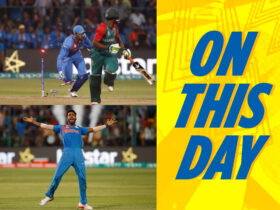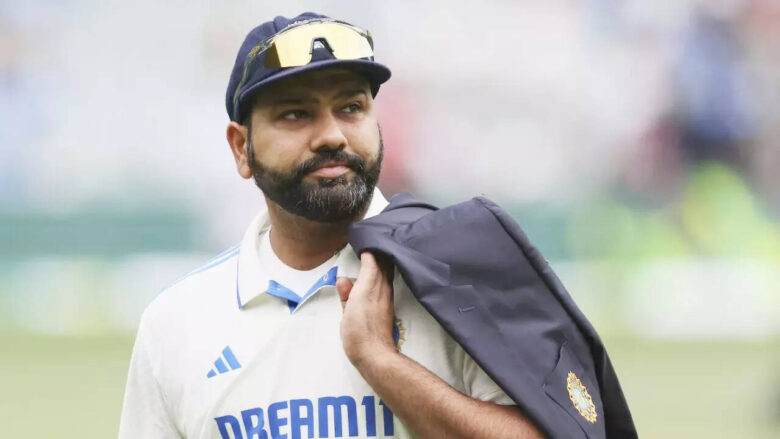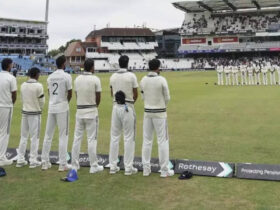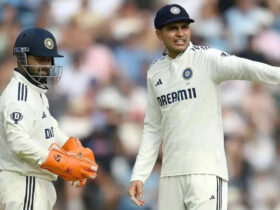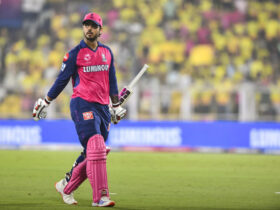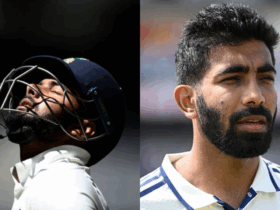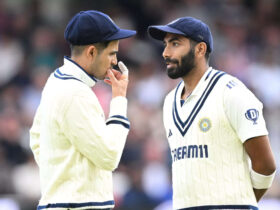Introduction: In a move that has stunned yet not entirely surprised the cricketing fraternity, Indian captain Rohit Sharma has bid farewell to Test cricket. The signs of this inevitable exit were glaringly evident during the Boxing Day Test against Australia at the Melbourne Cricket Ground (MCG) in the Border-Gavaskar Trophy 2024-25. As India grappled with form, leadership, and team dynamics, Rohit’s struggles as both a batter and captain painted a picture of a cricketer fighting against the tide. Let’s dive into the events that led to this monumental decision and what it means for Indian cricket’s future.
The Desperate Gamble at Melbourne: On the eve of the Boxing Day Test at the MCG, Rohit took a bold but desperate step by returning to the top of the batting order. Having missed the first Test due to the birth of his second child, he had been slotted into the middle order in the subsequent games to preserve the successful opening partnership of KL Rahul and Yashasvi Jaiswal. However, this tactical shift failed miserably. Single-digit scores in Adelaide (3 and 6) and a brief stint in Brisbane (10) highlighted his discomfort away from his natural opening slot. Determined to reclaim his spot, Rohit made the tough call to displace young Shubman Gill from the Playing XI at Melbourne. Yet, the gamble backfired with two more single-digit scores (3 and 9), as India slumped to a 184-run defeat. The pressure on the Indian captain reached a boiling point.
Team Turmoil and Mounting Criticism: The backdrop to the series wasn’t rosy either. India had suffered a historic 3-0 whitewash at home against New Zealand just before heading to Australia, denting confidence. The MCG loss, coupled with Rohit’s visible desperation and the sidelining of a promising talent like Gill, drew sharp criticism. Mid-series, the sudden retirement of veteran spinner R Ashwin after the Adelaide Test added to the sense of disarray within the camp. A senior BCCI official, speaking to Times of India last year, expressed frustration: ‘This is shocking. First Ashwin’s retirement, then the Shubman Gill episode in Melbourne. The narrative is slipping away. It’s time for tough decisions.’ The instability caused by Rohit’s batting position shuffle only fueled concerns about team cohesion and leadership.
The Inevitable Exit at Sydney: The final nail in the coffin came ahead of the New Year’s Test at the Sydney Cricket Ground (SCG). Rohit was conspicuously absent from the Playing XI, with the official statement citing that he had ‘opted out.’ However, the underlying truth was clear—his place in the side was no longer justified. In a mid-match interview with the broadcaster, Rohit put an end to speculation about his Test future, subtly hinting at the end of an era. With a mere 31 runs across five innings in the series at an average of 6.2, the numbers told a damning story. The MCG Test, unbeknownst to many at the time, was indeed his last in the longest format.
Captaincy Burden and Format-Specific Decisions: Beyond his batting woes, the burden of captaincy in Tests weighed heavily on Rohit. While he enjoyed success in white-ball formats—leading India to the T20 World Cup 2024 title—his Test leadership record was under scrutiny, especially after recent series losses. The selectors, unwilling to mix formats, prioritized a long-term leader for the upcoming World Test Championship (WTC) cycle, starting with the challenging England tour in 2025. Rohit, at 37, was unlikely to endure the physical and mental demands of a full cycle. The decision to move on was clear: avoid chaos and groom a younger leader rather than rely on stop-gap measures.
Legacy and the Road Ahead: Rohit Sharma’s Test career, spanning 59 matches with 4,137 runs at an average of 45.46, including 12 centuries, will be remembered for its highs—think the twin centuries against South Africa in 2019 as an opener. Yet, his twilight years in the format were marred by inconsistency and leadership struggles. His exit marks the end of an era but also opens the door for fresh faces. Will Jasprit Bumrah, who took over captaincy in Sydney, or a younger prospect like Shreyas Iyer step up as the long-term Test captain? As India embarks on a new WTC journey, the focus shifts to rebuilding stability and nurturing talent.
Conclusion: Rohit Sharma’s retirement from Test cricket was not a sudden shock but a culmination of events that unfolded starkly during the Melbourne Test. From batting slumps to team unrest and the unavoidable reality of age, the writing was on the wall. As Indian cricket turns the page, fans will cherish Rohit’s contributions while eagerly awaiting the dawn of a new era. The MCG may have been his final stage in whites, but the legacy of the ‘Hitman’ endures. What are your thoughts on Rohit’s exit and India’s future in Tests? Let the conversation begin.


